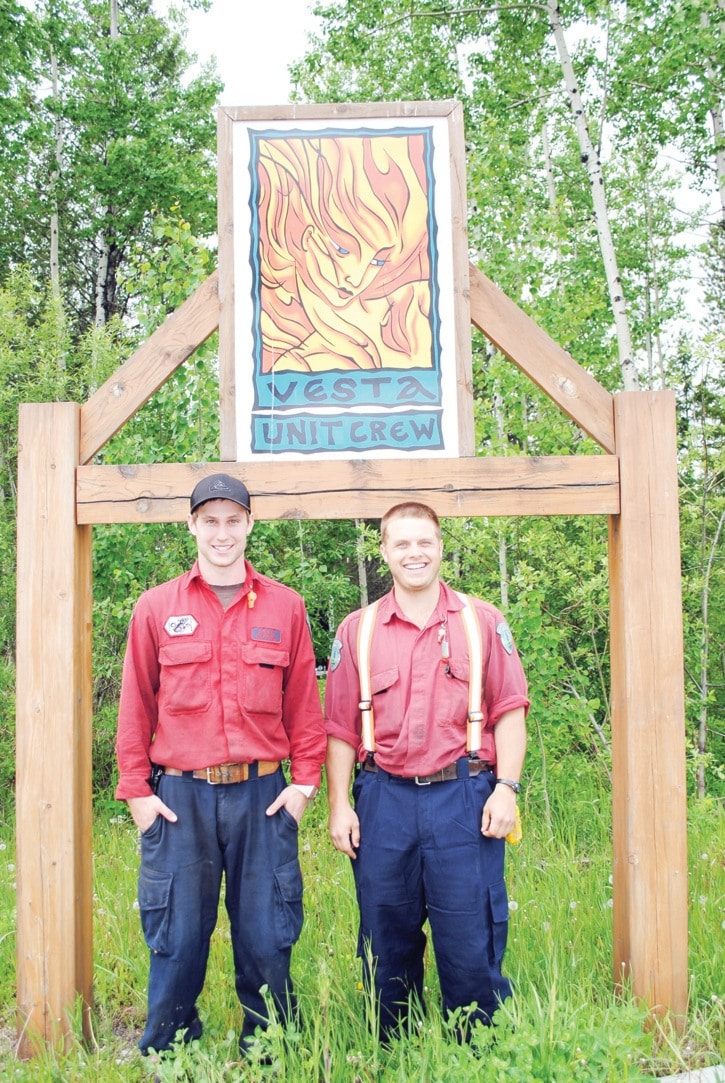Last month Bryan Barron and Todd Routtu were among 24 Cariboo Fire Centre firefighters deployed to Ontario to help fight a fire south of Timmins.
It was the second time Barron had gone to Ontario, the third time for Routtu.
Compared to fighting fires in the Cariboo region the two say there are some differences.
“The two main ones I can think of are the deep dust layer or muskeg that burns deep and the flat terrain there makes the fires more wind driven, rather than here with all the mountains, where fires usually travel uphill,” Barron explains.
It can be more unpredictable in Ontario because the wind can shift the fire direction at any time, he adds.
When the Cariboo firefighters arrived in Thunder Bay in May they were briefed by Ontario Ministry of Natural Resources personnel on where the fires were located and their status. Their second day was spent at Lakehead University doing a day-long training session.
In contrast to the Cariboo, there is more water to access when fighting fires in Ontario.
“We have a lot of water here, but they have swamps, lakes, and rivers everywhere and because it’s so flat there it’s spread out. They use a lot more pressure and a lot more water. Here we have to conserve water quite a bit.”
Additionally, the deep dust layer requires more water pressure, or hydraulicing.
Routtu points out in the Cariboo it’s the norm to use an inch and a half hose to get to the fire and then go to a smaller hose because it conserves water and saves on pressure for pumping water, say up a mountain side.
Pressure is lost for every foot they go up, he adds.
“Over there, they have just one person on the end of the hose and it’s the same size hose all the way around. Four people are stretching out and dragging the hose and attacking the fire right around the edge. Then once you’ve reached the extent of the hose’s 100 feet, you start stretching it out again,” Routtu says.
Hose work in the Cariboo, however, will usually involve some people going ahead, separating the fire from the trees, stretching the hose, and hosing the edge of the fire right there.
They also noticed the tactic in Ontario was to go directly to the head of the fire and attack it by hosing along the edge.
Often that’s not possible in the Cariboo.
“We’ll draw a line in the sand, sort of, to say we don’t want the fire to cross here,” Routtu explains.
When they were in Ontario, they were in the same 20-man crew, but worked on different four- or five-man squads, attacking different sections of the fire, Barron recalls.
Everyone they worked with alongside the fire in May was from B.C.; however, the division supervisor and most of the incident commanders, who were from Ontario, helped accommodate the Cariboo guys and made it as easy as possible for them to work in a new environment.
Aside from techniques another difference is accommodations.
In B.C., the firefighters sleep at a central camp where everyone has showers and eats, whereas in Ontario it was more of a camping style where each firefighter set up a cooking station and a tent.
“More or less we’re on our own there. They drop off food for us, and we are responsible for cooking and cleaning and everything,” Barron says, adding their crew lucked out and had a former chef on their crew who was keen to order food and cook for all of them.
“It was a neat experience, sitting around the camp fire. There were just 20 of us, rather than 200,” Barron says.
“We’d talk about the challenges and new things we’d seen,” Routtu adds, saying he enjoys trying different strategies and techniques.
Barron and Routtu are drawn to firefighting because of the good physical workout it offers. When they’re not fighting fires crews work in burnt out areas trying to help put the forest back in order.
“We’ll reseed cat guards and try to reduce our disturbance of the forests,” Routtu explains.
They also do school presentations about fire prevention and, depending on the age of students, getting Smokey the Bear’s message out. Students are also instructed on how to contact the fire centre if they see a fire.
“The public is our best way of finding out about fires out there,” Routtu adds.
